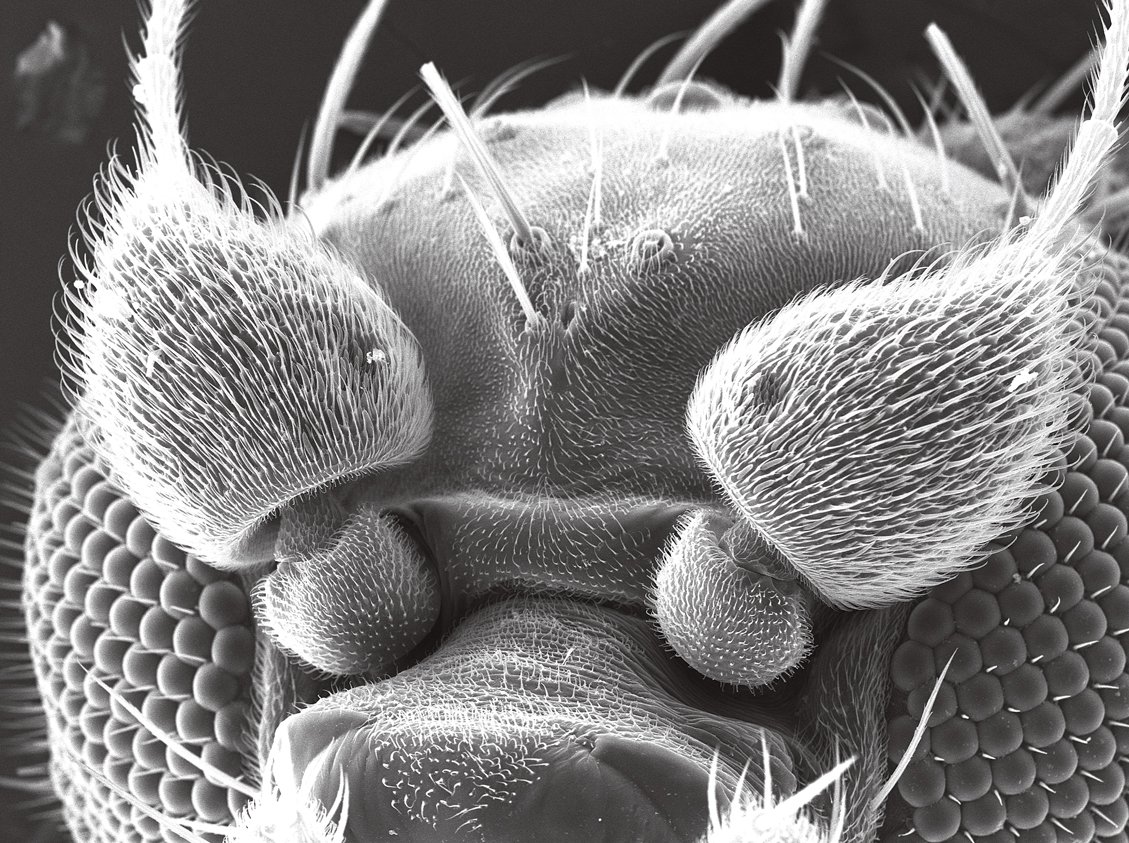What a Fly’s Sense of Smell Can Tell us About the Brain
A scanning electron microscopy (SEM) image of a female Conicera tibialis’s antennae. Courtesy of Dr. Ezgi Kunttas (Caltech) and Dr. Brian Brown (NHMLA)
If lab animals were celebrities, Drosophila melanogaster—the common fruit fly—would be a household name. For decades, Caltech researchers have developed genetic tools that allow them to use these flies, among the most common animal research subjects in the world, to answer questions such as how emotions are encoded in the brain and how a fly’s microbiome influences its ability to walk.
But some different flies with lesser-known names are making an appearance in the laboratory of Elizabeth Hong (BS ’02), assistant professor of neuroscience and Chen Scholar. These include Termitophilomyia, which live as a parasite in termite nests; and Conicera (shown at left), colloquially known as coffin flies due to their affinity for dead animals. In Hong’s lab, research scientist Ezgi Kunttas, in collaboration with Brian Brown, entomology curator at the Natural History Museum of Los Angeles County, studies the evolution of a diverse group known as phorid flies—looking specifically at the evolution of their noses.
Olfaction, or the sense of smell, was one of the first sensory systems to evolve in animals, because it is a necessary tool to sniff out food, avoid predators, and find a mate. The Hong Lab primarily uses fruit flies to study how this primal sense is wired into the fly brain and, by extension, our own.
A scanning electron microscopy (SEM) image of a female Termitophilomyia head, highlighting the antennae and reduced eyes. Courtesy of Dr. Ezgi Kunttas (Caltech) and Dr. Brian Brown (NHMLA)
A fly’s “nose” consists of its two antennae, which are coated with thin hairs called sensilla that hold the insect’s olfactory neurons. Odors diffuse into tiny pores on the sensilla and bind onto corresponding receptors on the olfactory neurons, which send signals down the hairs and into the brain. Though humans do not have antennae, an analogous process happens in our noses when we lean in to catch a whiff of a delicious dish or recoil from the stench of rotten eggs.
Kunttas uses scanning electron microscopy to take detailed, magnified photos of the antennae of exotic flies to understand how their diversity across different species may relate to the evolution of niche lifestyles: parasitic, scavenger, or herbivorous, for example. Tiny Conicera, which measures only 1 millimeter long, feeds on dead animals. But because it is outcompeted by larger carrion feeders such as blowflies, Conicera finds sources of food underground that bigger flies cannot access. Such comparative analyses help illustrate the selective pressures that shape antennal form and function to optimize the detection of chemical signals that promote each species’ survival.
“Fruit flies are interested in the sweet aroma of fermented fruits, which is very different than the decaying organic matter that coffin flies are drawn to,” Kunttas says. “Understanding the differences in how odors are processed in the brains of insects that care about very different types of odors provides insight into the broader problem of how complex chemical information can be efficiently coded and read out.”


